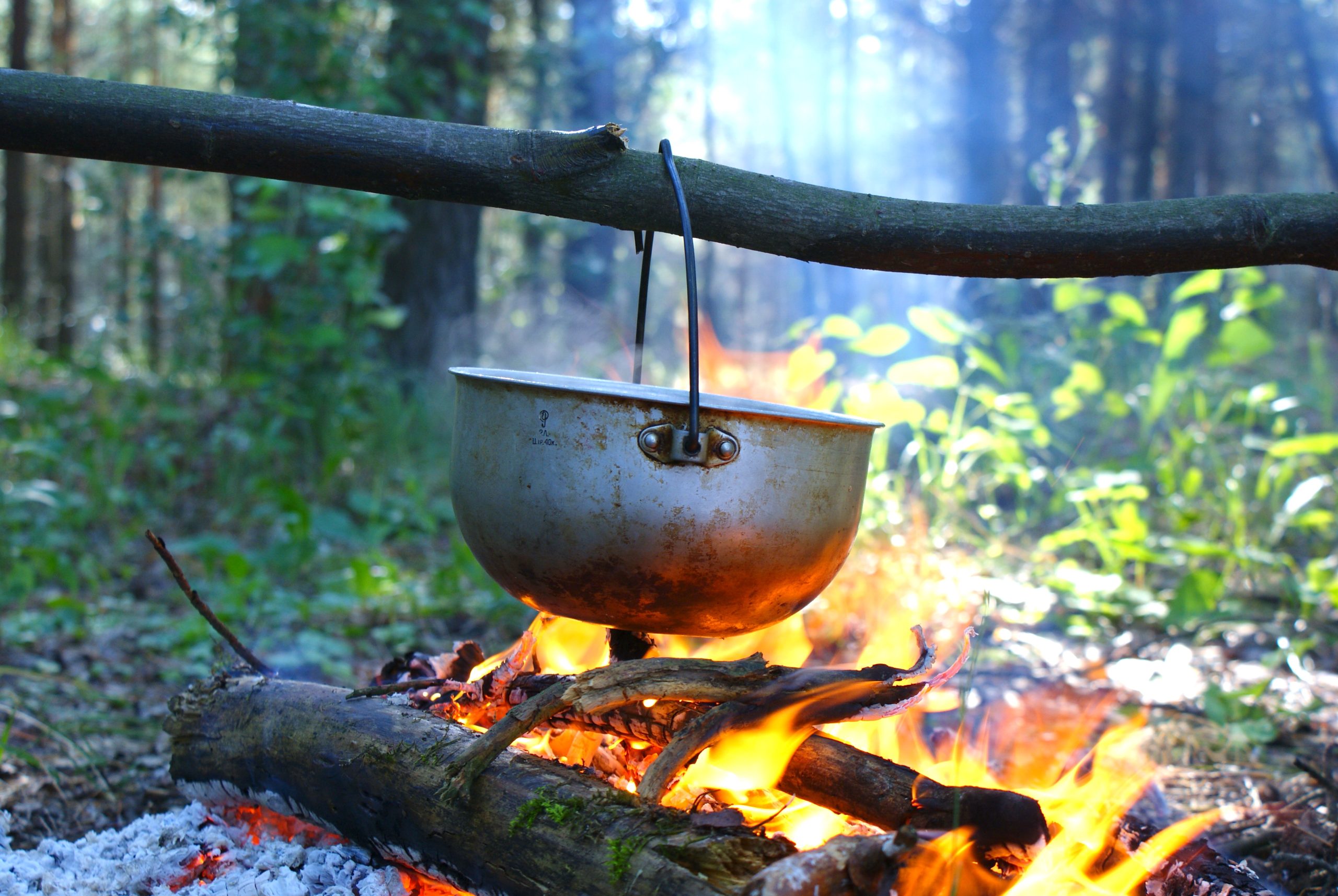
If you enjoy spending time in the wilderness, knowing how to build a campfire is essential. Not only is a campfire a great place to roast marshmallows or gather around for stories, but fire also provides warmth, light in the darkness, protection from wild animals, and a means to cook food. And if you happen to become lost or injured, a fire may be crucial for wilderness survival.
Create a Fire Bed
When building a fire in the wilderness, safety should always come first, not only to protect yourself but to prevent wildfires that wreak havoc on the environment and wildlife. A solid foundation for your campfire is essential for both a good fire and for safety. If your campsite has a designated fire area, make sure to use it. However, if you’re camping in the rugged backcountry, you’ll have to make your own. Choose an area away from trees, bushes, dry grasses, or other flammable materials. The area you choose for a fire bed should be bare earth, gravel, sand, or stones. In some cases, you may have to make your own by digging clearing dry grasses, branches, or anything else that may catch fire easily.
Once you have your fire bed area, you can place a circle of larger rocks or stones around the designated fire bed to prevent the fire from spreading further.
Gather Wood
There are three types of materials/wood you’ll need to build a fire – tinder, kindling, and fuel wood. You can find wood for your fire by looking for dead, fallen branches on the ground. Don’t cut wood from trees. Not only is it bad for the ecosystem, but there’s also a chance the branch is too “green” and won’t burn well.
Tinder is essential for starting a fire and includes basically anything that can easily produce a flame and burns quickly. Materials like wood shavings, dry grass, dry leaves, dry bark, spruce sap, or paper can make a good tinder.
Homemade tinder/fire starter ideas:
It’s often smart to bring your own tinder or fire starter in your gear as sometimes it may be difficult to find natural tinder that’s dry enough to catch fire. You can buy bags of birch bark or another type of fire starter ahead of time and pack in your gear to ensure you always have dry tinder to start your fire. Here are some other homemade fire starter ideas you can use from your gear in a pinch.
Kindling. Because tinder burns so quickly, you’ll need kindling to help build your fire and keep the flame going, and large logs will smother your flame. Kindling usually consists of small branches or twigs no more than an inch wide or about the width of a pencil or your finger. Kindling wood also needs to be dry or it won’t burn easily.
Fuel wood is essential to keep a long-lasting fire. This type of wood should be roughly the size of your forearm. Dry fuelwood burns best. Look for big branches that snap easily. If they bend they are probably too damp or not yet dead and will create a lot of smoke. However, just because it’s wet on the outside doesn’t always mean it’s wet on the inside. Slightly damp firewood can dry out in the fire, but it’s not always ideal for a hot, long-lasting fire.
Lay Your Fire
Once you’ve collected your firewood, it’s time to lay your fire. There are several types of campfires you can build, however, some are much more useful than others depending on the situation.
Teepee – The classic campfire that’s useful when fuel wood may be slightly damp and also great for beginners. Tinder is placed in the center with kindling and fuel wood stacked around in a teepee tent shape.
Log-cabin – A long-lasting fire with a wide, flat structure that is great for cooking but may be more difficult to create for beginners.
Lean-to – This campfire is great for windy days as it shields the wind to get your first flame started.
Cross – Kindling and fuel wood are crisscrossed over the tinder.
Once you’ve laid your fire, ignite the tinder with a match or lighter. Add more tinder as the fire grows, then lightly blow at the base of the fire to allow the kindling to catch. Add more kindling and fuel wood to keep the fire going.
Remember never to leave your fire unattended and extinguish the fire when you leave the area by slowly pouring water on the flames and hot coals.